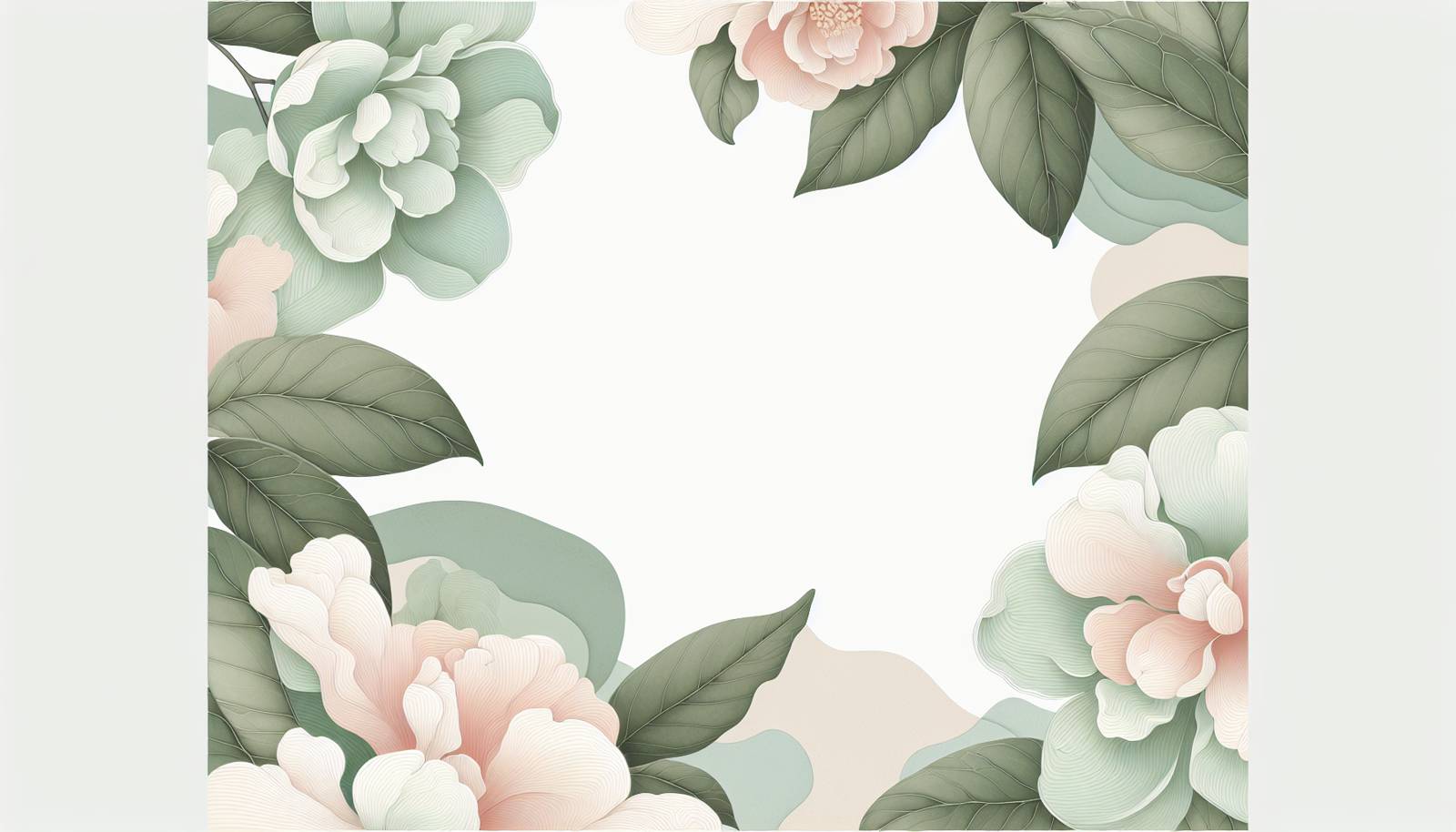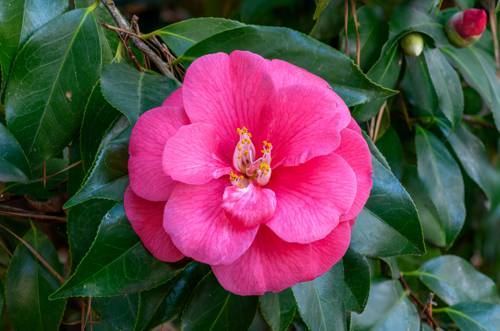
FAQ About Indoor Camellia Care and Cultivation

What are the basic light requirements for growing Camellias indoors?
Camellias prefer bright, indirect light when grown indoors. They should be placed near a window where they can get ample light without being exposed to direct sunlight, which can scorch their leaves. Ideally, a north or east-facing window is best. If sufficient natural light isn't available, consider supplementing with fluorescent grow lights for about 12 to 14 hours a day.

Which type of soil is best for indoor Camellias?
Indoor Camellias thrive in acidic, well-draining soil. A good potting mix can be created by combining one part peat moss, one part pine bark, and one part perlite. This mix mimics their natural environment and helps maintain the necessary acidity. Ensure the pot has drainage holes to prevent waterlogging, which can harm the plant.

How often should I water my indoor Camellias?
Camellias require consistent moisture but should not be overwatered. Water your plant when the top inch of soil feels dry. The frequency may vary depending on the humidity and temperature of the room, but generally, watering once every week to ten days is sufficient. Adjust your watering schedule if the plant begins to show signs of stress, such as yellowing leaves.

What is the ideal temperature range for indoor Camellias?
Camellias prefer cooler indoor temperatures, ideally between 60°F and 65°F (15°C to 18°C) during the day and slightly cooler at night. Avoid placing them near heat sources or drafty windows. Maintaining consistent temperatures helps prevent bud drop and encourages healthy blooms.

How do I prune my indoor Camellias?
Pruning is essential for maintaining the shape and health of indoor Camellias. Prune after they finish blooming, removing dead or crossing branches. Trim back any overly long branches to encourage bushier growth. Use clean, sharp pruning shears to make clean cuts, and avoid cutting too close to the main stem to prevent damage.

Can Camellias be fertilized indoors, and if so, what type should I use?
Yes, indoor Camellias can be fertilized using a balanced, acid-forming fertilizer, formulated explicitly for acid-loving plants, such as azalea or rhododendron feed. Fertilize in early spring and then every month until mid-summer, following the manufacturer's instructions. Avoid fertilizing in late summer and fall to prevent stimulating new growth that could be damaged in winter.

What are the signs of overwatering in indoor Camellias?
Overwatering Camellias can lead to several symptoms, including yellowing leaves, root rot, and leaf drop. The plant may also show signs of wilting despite being wet. To avoid overwatering, always check that the top inch of soil is dry before watering, and ensure the pot has proper drainage.

How do I increase humidity for my indoor Camellia plant?
Camellias prefer a humid environment, and indoor settings can often be too dry, especially in winter. Increase humidity by placing a tray of water near the plant, using a room humidifier, or misting the leaves regularly. Grouping plants together can also help maintain higher humidity levels around them.

What could cause the leaves on my indoor Camellia to turn yellow?
Yellow leaves on an indoor Camellia can be caused by several factors, including overwatering, poor drainage, insufficient light, or a deficiency in nutrients. First, check your watering practices and drainage, then assess the light exposure and consider using a balanced, acid-forming fertilizer if needed. Correcting these factors usually helps the plant recover.

Why are my indoor Camellia buds dropping before blooming?
Bud drop in indoor Camellias can result from abrupt changes in environmental conditions, such as temperature fluctuations, drafts, or inconsistent watering. Make sure the plant is kept at consistent cool temperatures and receives even moisture. Avoid moving the plant during the budding period, as stability is crucial for flower development.

What pests commonly affect indoor Camellias, and how can I deal with them?
Indoor Camellias can be affected by pests such as aphids, spider mites, and scale. Inspect your plants regularly, and if you notice pests, treat them with insecticidal soap or neem oil. Ensure good air circulation around the plant and keep the foliage free from dust to discourage pest infestations.

How can I ensure my indoor Camellia blooms abundantly?
To encourage abundant blooms on your indoor Camellia, ensure it receives bright, indirect light and is kept in a cool environment. Regular feeding with a balanced, acid-forming fertilizer during the growing season will provide the necessary nutrients for flowering. Consistent care, including proper watering and pruning, also supports a healthy blooming cycle.

Are there specific types of Camellias better suited for indoor cultivation?
Some Camellia varieties are more tolerant of indoor conditions than others. Compact varieties, such as Camellia sasanqua, are often recommended for indoor cultivation due to their smaller size and adaptability. Selecting a variety known for its resilience and ease of care will increase your success with indoor growing.

Can I propagate Camellias indoors, and what is the best method?
Yes, you can propagate Camellias indoors using cuttings. Take semi-hardwood cuttings in late summer or early autumn. Remove the lower leaves and dip the cut end in rooting hormone. Place them in a pot filled with a damp, well-draining soil mix, and cover with a plastic bag to maintain humidity. Position the pot in bright, indirect light, and keep the soil consistently moist until roots develop.

How should I repot my indoor Camellia?
Indoor Camellias should be repotted every 2-3 years to refresh the soil and give them room to grow. Repot in late winter or early spring, following their blooming season. Choose a pot one size larger with drainage holes, and use a fresh well-draining, acidic soil mix. Carefully remove the plant from its current pot, place it into the new one, and fill with soil. Water thoroughly after repotting.

What are some common diseases that affect indoor Camellias?
Indoor Camellias can be susceptible to diseases such as leaf spot, petal blight, and root rot. Leaf spot appears as brown spots on the leaves, while petal blight causes browning of the flowers. Root rot is often linked to overwatering and poor drainage. To manage these diseases, ensure proper watering, good air circulation, and remove any affected leaves or flowers promptly.

How do I select the right pot for my indoor Camellia?
Select a pot for your indoor Camellia that has adequate drainage holes to prevent waterlogging. The material of the pot, such as clay or ceramic, can help regulate moisture levels. Ensure the pot is slightly larger than the plant's current one to allow for root growth, but not so large that it retains too much moisture.

Is it necessary to mimic outdoor conditions for indoor Camellias during winter?
Yes, mimicking cooler outdoor conditions during winter is beneficial for indoor Camellias. Lower the temperature in the room to around 45°F to 60°F (7°C to 15°C) to simulate their natural dormancy conditions. This helps prepare the plant for blooming in the following season. Ensure they still receive adequate light during this period.

What should I do if my indoor Camellia is not flowering?
If your indoor Camellia is not flowering, try assessing several factors: check that it is receiving enough light, ensure it is kept at appropriate temperatures, and review your fertilization practices. Stress from inconsistent watering or insufficient rest during winter can also impact flowering. Addressing these issues often helps restore the plant's bloom cycle.
